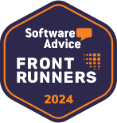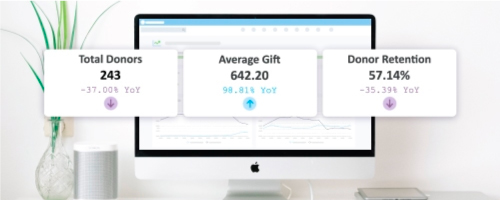SAVE UP TO 20% ON DONORPERFECT
All-in-one nonprofit tools, top-rated customer support, and savings included.
GET STARTEDFundraise without compromise! All-in-one nonprofit tools, top-rated customer support, and savings included. Get started >>

Your Canadian fundraising success partner
Streamline your efforts and inspire donors to give more with DonorPerfect — the Montréal-based fundraising software trusted by over 75,000 nonprofit professionals.

Your all-in-one fundraising and donor management solution.
Tailored for Canadian fundraisers, DonorPerfect is designed to help you save time, amplify your impact, and raise more for your mission.
Experience the confidence of data hosting within Canada, backed by our bilingual team of training and support experts based in Montréal since 1987. With convenient billing in Canadian dollars and tools addressing the complexities of CRA tax receipting, rest assured knowing you’re meeting compliance regulations. Plus, enjoy the flexibility of our partnership with no long-term contract commitments.
Why choose DonorPerfect?
Nonprofits raise 25% more funds in their first year using DonorPerfect.
Imagine what your team could accomplish with software that’s proven to help nonprofits grow.
Discover DonorPerfect fundraising software

Show gratitude to your supporters with receipts that follow Canadian Revenue Agency standards.
Using DonorPerfect’s Receipting tools, you can send out email and letter receipts to your valued donors, as well as thank donors for the donations they have made.
DonorPerfect’s Receipting feature enables you to:
- Send email receipts, letter receipts, or both.
- Send individual or consolidated receipts
- Send acknowledgements with or without an official receipt
- Reissue receipts by email or by letter
- Preview every email receipt message before it is sent
- Customize templates for each occasion: add an image, colors, hyperlinks
- Issue receipts and acknowledgements in English, French or any other language
- Include currency symbol
- Send securely encrypted e-receipts
- Create contact records for sent receipts automatically
- Generate notification letters for tribute donations
Achieve growth in any sector
We work with 11,000 nonprofits in over 25 sectors, providing customized fundraising solutions to satisfy unique needs and simplify vital tasks. No matter your sector, you have hands-on support from our team of fundraising experts, who specialize in helping nonprofits grow. With our help, organizations in the Arts & Culture community, for example, average 88% more funds in their first year with us. Now, let’s discover what your team can do!

Personalized onboarding, on-demand training, and customer support
When you purchase DonorPerfect, our expert team partners with yours so everyone you lean on can learn and leverage your new system on Day 1 and beyond.

Support and training when you need it, from bilingual DonorPerfect experts.
DonorPerfect clients love our dedicated customer service team and our commitment to their success.
As a DonorPerfect client, you can lean on our live support team and DonorPerfect’s online client engagement community, for assistance resolving issues, learning new features, and discovering best practices for using your DonorPerfect system. Everyone from your newest staff members to your most-seasoned development professionals will greatly benefit from DonorPerfect Support.
Choose the DonorPerfect Support Package that’s right for you. Our Canadian team is based in Montréal and is always available to answer you in English or in French.
Manage data and campaigns in one place
DonorPerfect is your nonprofit team’s complete fundraising hub. Coordinate development and donor engagement efforts with features and tools built for collaboration.

Flexible terms and affordable pricing
Here at DonorPerfect, our terms are based on our top priorities: your happiness and success. That’s why we offer a low upfront deposit, flexible monthly payment options, and no long-term contracts.
See Pricing »
Learn and grow with free nonprofit resources
Access fundraising guides, expert webinars, and donor engagement templates anytime, from anywhere in the Nonprofit Resources Library.
Digital marketing with Constant Contact
Every DonorPerfect system comes with a Constant Contact account built right in, providing a digital marketing platform trusted by nonprofits and proven to deliver email results. Nonprofits using DonorPerfect and Constant Contact together see 19% more people open their emails and 180% more people open their email links.*
*Compared to using Constant Contact alone.
Join a growing community of over 75,000 nonprofit professionals
DonorPerfect is an amazing tool for our organization. I truly could not do my job without it. The simple design, deep functionality capabilities, and endless customization options make it an amazing CRM for nonprofits.”
– Nicole P., Philanthropy Associate
10 years with DonorPerfect. Still a strong yes. DonorPerfect is fast, cloud-based and accessible anywhere, powerful and flexible, customizable, and easy enough for new staff to use comfortably and with confidence while the admins can create calculated fields and custom report solutions.”
– Rick M., Advancement Operations Manager
Our experience with DonorPerfect has been excellent for 10+ years. It allows us to track all of our donors’ giving history as well as update their contact information very easily…The reports allow us to analyze where we are and where we need to be financially as an organization.”
– Carrie M., Development Director
Hear from nonprofit professionals like you
New and established nonprofit professionals trust DonorPerfect to simplify their daily tasks. See how our team can help yours —
click to read reviews from fundraisers like you!




















